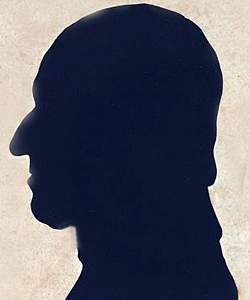Edward Gorsuch (Bordewich, 2006)
Scholarship
Edward Gorsuch was also an angry man. He had, by his lights, been kind to the four prime field hands who had run away from him on the night of November 6, 1849. He had even promised them freedom when they reached the age o twenty-eight. That was an economically sensible decision in the border country of Maryland, where slavery had been in decline for decades, and the steady hemorrhaging of slaves north in Pennsylvania made human livestock a poor long-term investment. But it was also magnanimous, the sixty-three-year-old Gorsuch thought. After all, he had every right to sell unwanted slaves southward, if he preferred. But he was a Methodist, and a Sunday school teacher, and a man of principle. He was also a deeply proud man, and by the spring of 1851 his failure to find the men--Noah Buley, Nelson Ford, and George and Joshua Hammond--embarrassed him in front of his fellow slave owners, and set a worrisome precedent of his seven remaining slaves.
Fergus M. Bordewich, Bound for Canaan: The Epic Story of the Underground Railroad, America’s First Civil Rights Movement (New York: HarperCollins Publisher, 2006), 325.
Edward Gorsuch (Slaughter, 1991)
Scholarship
The Catalyst for violence, the lightning bolt that started the riotous blaze, was a confrontation between Gorsuch and the man known in freedom as Samuel Thompson, one of the fugitives from his farm. Both men were angry by the time that Parker overheard part of their verbal exchange: "Old man, you had better go home to Maryland," said Samuel.
"You had better give up, and come home with me," said Gorsuch. Thompson then knocked his former master on the side of the head with a pistol, which felled him to his knees. When the slave owner tried to rise from the ground, he was clubbed again, perhaps a couple of times. Thompson shot him once, then several others poured more bullets into the body, and in what by this time was probably a purely symbolic gesture, an unspecified number of participants whacked him across the top of the head with corn cutters, emulating the scalping of a fallen enemy from another cultural tradition of American violence.
"You had better give up, and come home with me," said Gorsuch. Thompson then knocked his former master on the side of the head with a pistol, which felled him to his knees. When the slave owner tried to rise from the ground, he was clubbed again, perhaps a couple of times. Thompson shot him once, then several others poured more bullets into the body, and in what by this time was probably a purely symbolic gesture, an unspecified number of participants whacked him across the top of the head with corn cutters, emulating the scalping of a fallen enemy from another cultural tradition of American violence.
Thomas P. Slaughter, Bloody Dawn (New York: Oxford University Press, 1991), 69.
Edward Gorsuch (Scharf, 1874)
Reference
On the 15th of September [1851], a meeting of some five or six thousand persons was held in Monument square to give an expression of the sentiments and feelings of Baltimoreans relative to the recent outrage and murder at Christiana, Pennsylvania. The meeting was organized by Hon. John H. T. Jerome, president, with a large number of vice-presidents and secretaries. Messrs. Z. Collins Lee, Coleman Yellott, Francis Gallagher, Samuel H. Tagart, and Col. George W. Hughes eloquently addressed the meeting. The accounts of the terrible affair having reached the city on the 12th of September, were briefly this: Mr. Edward Gorsuch, a wealthy, well-known and highly esteemed citizen of the upper part of Baltimore county, residing at Coal Bottom, about 22 miles from the city, on the York road, missed two valuable slaves, and ascertaining that they had taken refuge at a small town in Lancaster Co., Pa., named Christiana, some 20 miles from Lancaster, determined to proceed thither and repossess himself of them. In company with his son Mr. Dickinson Gorsuch, and several of his neighbors, Dr. Pearce, Mr. Nathan Nelson, Mr. Nicholas Hutchins, and his nephew, Mr. Joshua Gorsuch, he proceeded to Philadelphia, and there obtaining the services of a deputy United States Marshal, started for the village above-named. They arrived there the next day about daylight, and proceeded to the house of Levi Pownell, where Mr. Gorsuch expected to find his slaves. The house seemed, occupied by negroes. Mr. Gorsuch immediately requested his slaves, who looked from the windows, to come down, but they refused, and threw an axe at him. About the same time two white men appeared on horseback, and simultaneously gangs of negroes surrounded the Deputy Marshal and his companions. The blacks then fired and killed Mr. Edward Gorsuch, and desperately wounded his son Dickinson, and slightly wounding Dr. Pearce. Throughout the whole county of Baltimore, as also in this and other parts of the State, the murder created an intense feeling of revenge.
J. Thomas Scharf, The Chronicles of Baltimore (Baltimore: Turnbull Brothers, 1874), 535-536.

